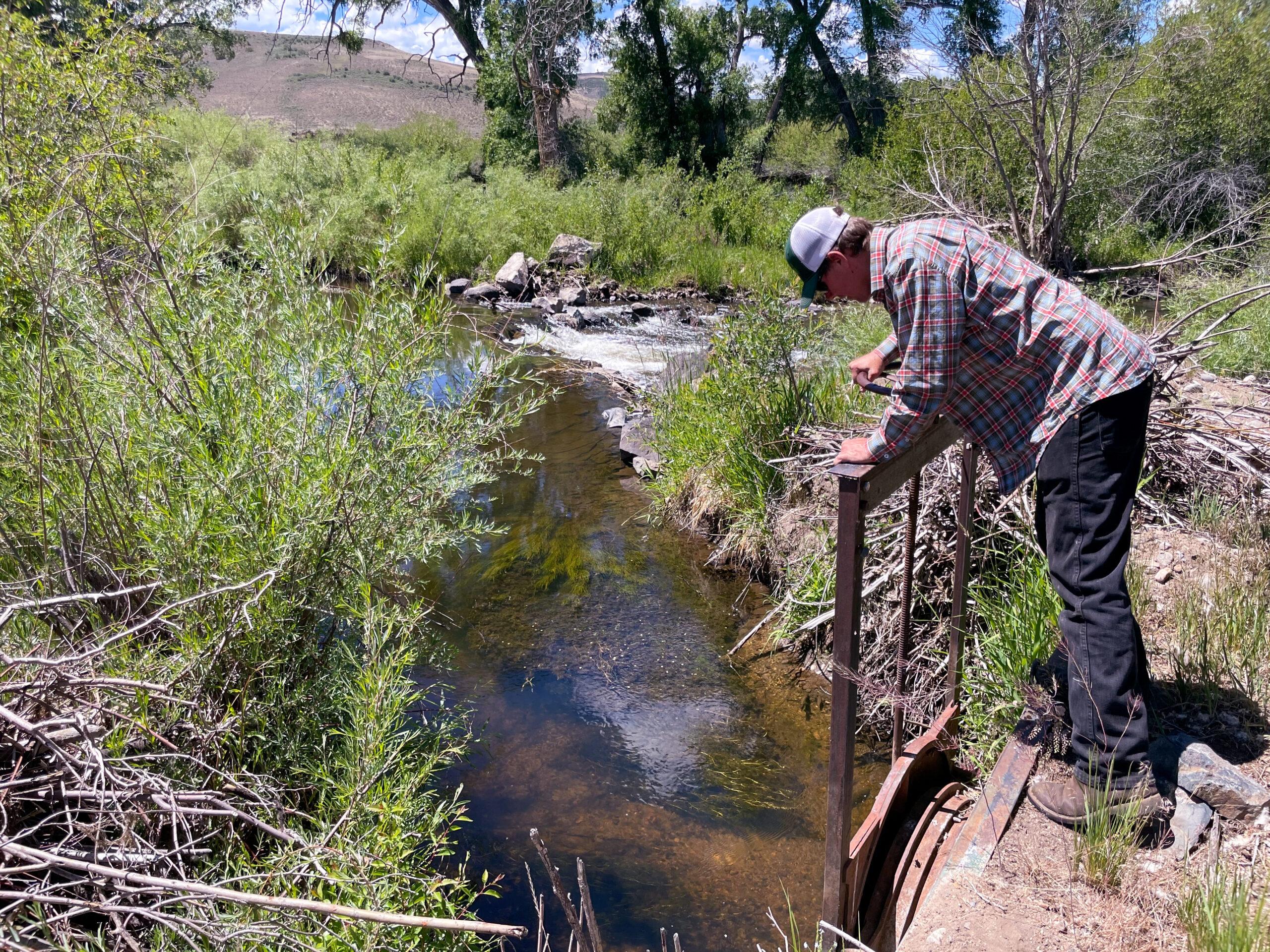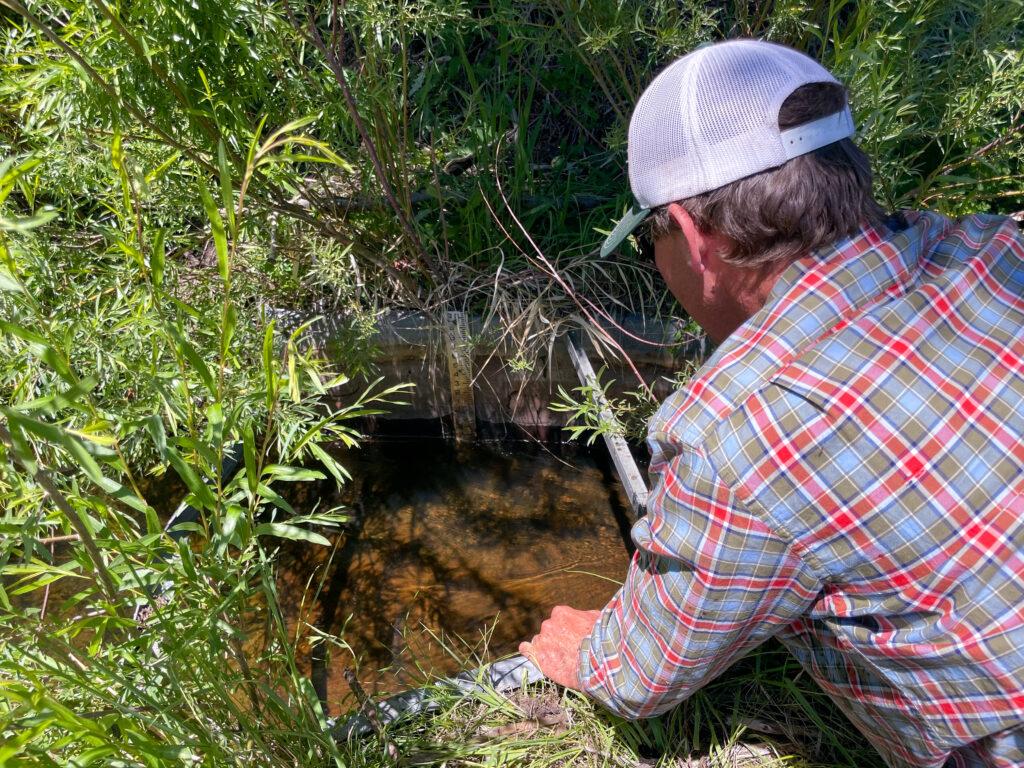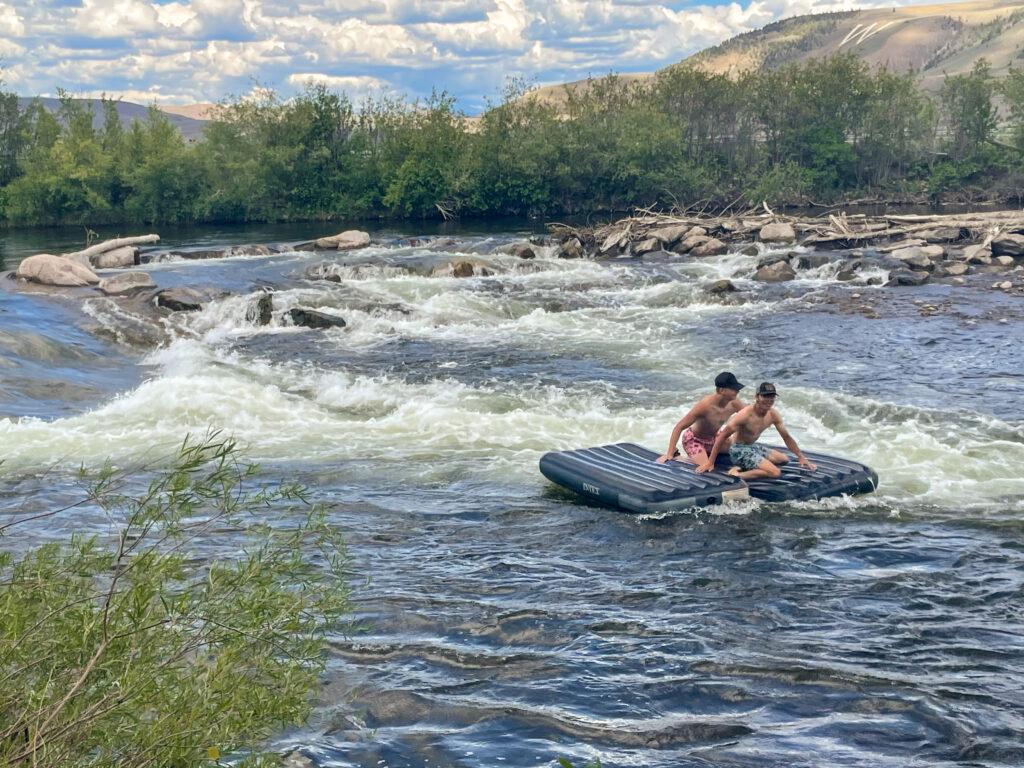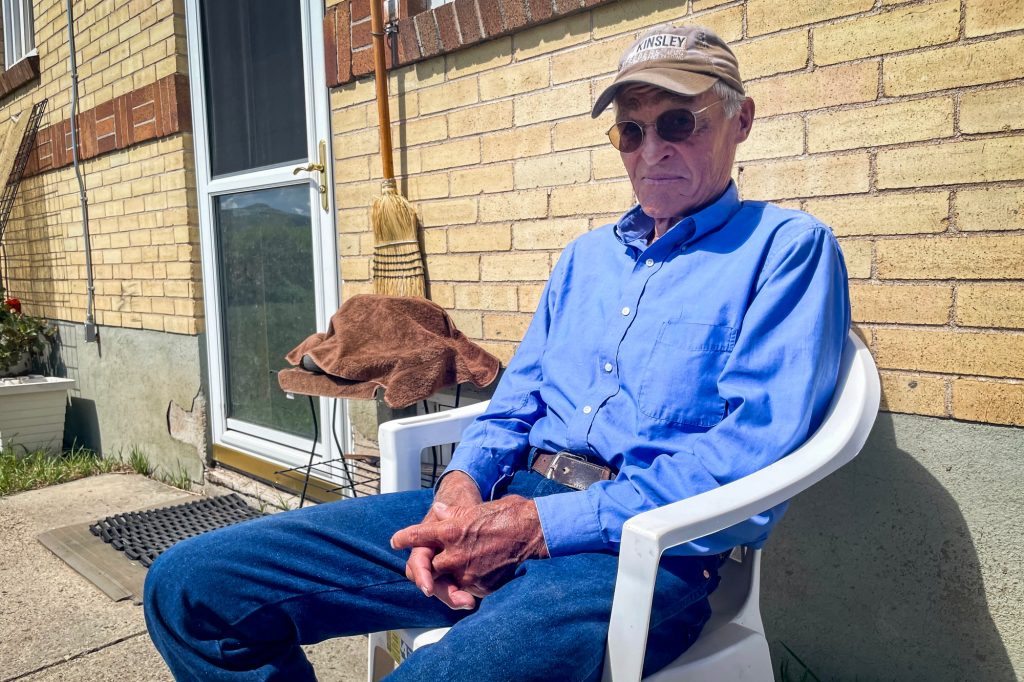
More than 40 million people rely on the Colorado River in the West, and every drop of it is used. But with climate change, there’s now less water to go around. To try and avoid a multi-state legal battle over this precious resource, Colorado and other states are considering paying people to keep more water in the river.
In southwest Gunnison County, farmers and ranchers rely on water that would otherwise end up in the Colorado River. Drought has plagued the area for more than 20 years, so the resource is now more valuable than ever.
Instead of using this water to irrigate his fields, rancher Bill Parker is getting paid by an environmental nonprofit to send his water rights downstream.
Parker stands next to a creek that feeds the Colorado River. He cranks down the small metal door of a headgate that sits in the creek, shutting off the flow to his pastures. Now that it’s closed, Parker’s water will stay in the river.
“If they're paying us more than we think the value is of the production, it's a no-brainer to do it,” Parker said.
Some see this concept, known as demand management, as a potential solution to a huge problem. The Colorado River has less water than it did a century ago for many different reasons, including climate change. But this river still needs to supply water to millions of people across multiple states and Mexico.

Parker thinks a voluntary state program that pays people to use less water is a good idea.
“To me, it’s kind of like the frontier of how we’re going to make this work,” Parker said. As a rancher manager, he said his goal is to figure out how to send more water down the river while still getting the same amount of production out of his ranch that he’s used to from his pasture-raised beef and lamb operation.
Parker’s deal with Trout Unlimited paid him $15,000 to keep water in the creek to ensure conditions can support fish and a healthy ecosystem. The question for state water planners: Could a tool like this be scaled way up to work across multiple states with millions of people and help keep enough water in the Colorado River and prevent states from suing one another?
That’s what Colorado water officials are trying to figure out. If the state could buy water from people like Parker, it could help. But Parker said some ranchers don’t like the idea since they need water to stay in operation.
“If that is in danger, of course they're going to be nervous about it,” Parker said.
Why does the state of Colorado need more water?

Under a 100-year-old water-sharing agreement called the Colorado River Compact, Colorado must keep a certain amount of water in the river for other states to use. Climate change, extended drought and overuse have chipped away at levels in the river, making it harder for Colorado and other upper-basin states to uphold their end of the deal.
Colorado fulfills its part of the agreement by sending water downstream, where it’s stored in Lake Powell on the Utah-Arizona border. Bad news? Powell just hit its lowest level on record.
“Unless we have some sort of a hydrologic miracle, we're going to be in trouble pretty quickly,” said John McClow, general counsel at the Upper Gunnison River Water Conservancy District.
“We need to scramble, there's no question about it,” he said.
McClow understands why Colorado could use a tool like this to buy more water, but he’s worried it won’t be fair and that the state will target some water users more than others. Buying an acre-foot of water from Denver would cost thousands of dollars, but the same amount of water might only cost $300 in Gunnison, he said.
Colorado water officials say that’s one of the big questions they’re trying to answer as they study if a program like this is even possible.
In 2019, Colorado, along with Utah, Wyoming and New Mexico committed to a drought contingency agreement that required the states to study the feasibility of a demand management plan. It will likely be years until any formal plan is adopted — if ever.
Colorado would need millions of dollars to buy the water and figure out what it’s worth to someone who makes a living off of it. Bill Trampe, a third-generation rancher in Gunnison County, doesn’t think the state could afford to pay him for the loss he would suffer by giving up his water.

Covering the loss of the hay crop he’d lose isn’t enough, he said. What about the harm to his cattle herd?
“Am I going to sell them? If I sell them, there goes a cattle generation’s worth of genetics,” Trampe said. “So I don’t know how you pay me for that.”
Becky Mitchell, director of the Colorado Water Conservation Board, said Trampe’s concerns are exactly what the state is considering as it studies the feasibility of a large-scale demand management program. She said any program the states commit to would be voluntary.
“If it was something that didn’t work for you or your operations, you would not have to make that choice,” Mitchell said.
There might not be a choice in the future: If Colorado can no longer send enough water downstream, Mitchell said water rights holders across the state could be forced to cut their water use — and they might not get paid for those losses.
- Lake Powell Has Hit Its Lowest Level On Record. Here’s What That Means For Colorado And States That Rely On It
- After 20 Years Of Drought, Western Slope Ranchers Face A Choice — Keep Adapting, Or Move Along
- It’s Too Hot And Dry To Fish This 100-Mile Stretch Of The Colorado River
- In Fountain, Colorado, There’s Plenty Of Room For New Homes. But There Isn’t Enough Water









